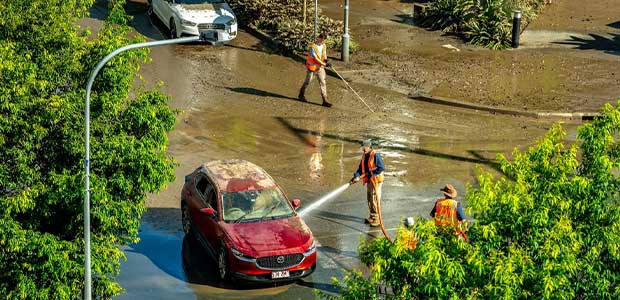
How to Keep Workers Safe During Flood and Storm Cleanup
Workers helping with cleanup after a flood or storm can be exposed to multiple hazards.
- By Alex Saurman
- Nov 18, 2022
During floods, people often take shelter and try to avoid any hazards. Unfortunately, when the flood is over, hazards may still linger, especially for those cleaning up.
These workers may be exposed to electrical, carbon monoxide, mold, drowning or fire hazards, according to OSHA. Luckily, the agency provides tips for employers to keep flood cleanup workers safe from these and other hazards:
- When using any generators, be sure to use them outside to keep workers safe from carbon monoxide. According to the CDC, carbon monoxide kills 430 or more people every year.
- See any fallen or damaged power lines? Stay away. Only those trained to work on power lines should do so.
- After a storm, there are usually fallen trees. If you have to remove or cut them, especially with “chainsaws or chippers,” wear all PPE necessary.
- During flood cleanup, workers may also be exposed to “chemical/biological hazards.” To mitigate these risks, OSHA recommends hand washing and using proper PPE.
When cleaning up after a storm in general, not just a flood, OSHA provides these recommendations, according to a recent news release:
- “Evaluate the work area for hazards.
- Assess the stability of structures and walking surfaces.
- Ensure fall protection when working on elevated surfaces.
- Assume all power lines are live.
- Operate chainsaws, portable generators, ladders, and other equipment properly.
- Use personal protective equipment, such as gloves, hard hats, hearing, foot and eye protection.”
Photo credit: Alex Cimbal / Shutterstock.com
About the Author
Alex Saurman is a former Content Editor for Occupational Health & Safety,who has since joined OH&S’s client services team. She continues to work closely with OH&S’s editorial team and contributes to the magazine.